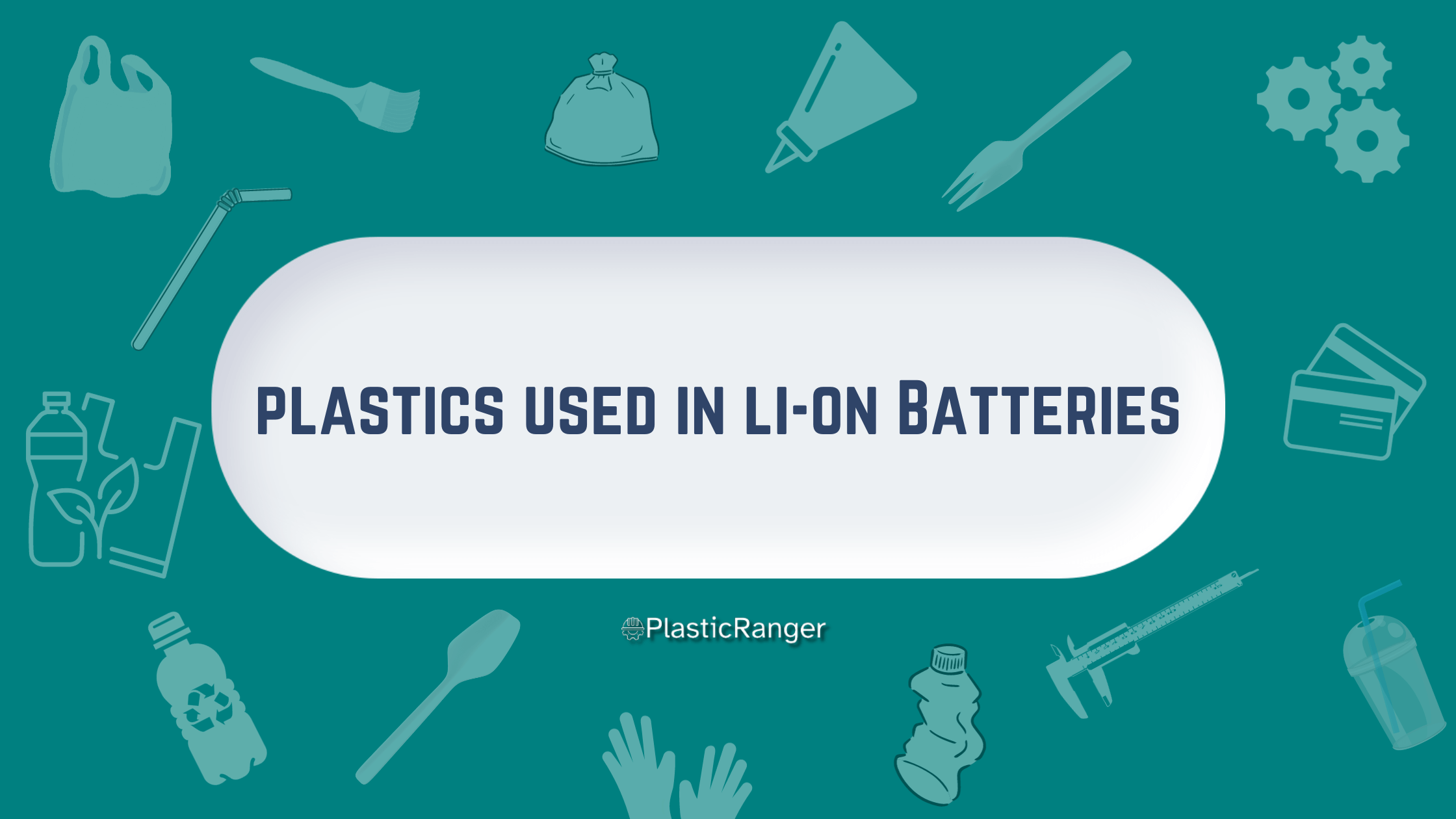Plastics Used in LI-ON Batteries
Lithium-ion (Li-ion) batteries have revolutionized the world of portable energy storage, powering everything from smartphones to electric vehicles.
While the chemistry and electrochemical processes are often the focal points, the plastics and polymers used in these batteries play crucial roles in their functionality, safety, and efficiency.
Separator Films
The separator is a critical component of Li-ion batteries. It’s a thin film between the anode and cathode, ensuring they remain separated preventing short circuits.
Material: Often made from polyolefins, especially polyethylene (PE) and polypropylene (PP). They’re chosen for their porosity, which allows ions to pass through while preventing physical contact between electrodes.
Function: Beyond preventing shorts, separators also play a role in thermal shutdown. If a battery overheats, PE begins to melt, closing its pores and stopping the ion flow, thus shutting the battery down.
Binders
Binders help hold the active materials in the anode and cathode together, ensuring they remain attached to the current collectors.
Material: Polyvinylidene fluoride (PVDF) is the most commonly used binder in Li-ion batteries. However, due to environmental concerns with PVDF, research has also looked into alternative binders like carboxymethyl cellulose (CMC) and styrene-butadiene rubber (SBR).
Function: The binder ensures the electrical connection between the active materials and the current collector. This guarantees efficient charge and discharge cycles.
Encapsulation and Packaging
Protecting the battery’s internals from the environment and vice versa is crucial for efficiency and safety.
Material: The most common encapsulated plastics include thermoplastics like PET, PVC, and polypropylene. For higher energy-density cells, aluminum-plastic composite films are often used.
Function: These materials provide a barrier against moisture, which can degrade the electrolyte and other components. They also prevent the escape of electrolytes or other hazardous materials, especially during battery damage.
Thermal Management Components
Temperature regulation is crucial for the safety and longevity of Li-ion batteries. Plastics are utilized in components that manage and dissipate heat.
Material: Thermally conductive plastics, often filled with ceramic or metallic fillers, are used for parts like heat sinks. Standard bases for these plastics include polyamides (PA), polycarbonate (PC), and polyphenylene sulfide (PPS).
Function: These components ensure the battery operates within a safe temperature range, preventing overheating and potential thermal runaway scenarios.
Housing and Casing
The external shell of the battery needs to be robust and protective.
Material: Polycarbonates (PC) and ABS plastic blends are famous for battery casings, especially in consumer electronics. They offer a balance of strength, flexibility, and moldability.
Function: These plastics protect the battery’s internals from physical damage, ensuring structural integrity even after drops or impacts.
Current Collectors
While often made from metals like copper (anode) and aluminum (cathode), these collectors sometimes have a protective plastic coating.
Material: Polymers that can endure the battery’s internal conditions, sometimes with added flame retardant properties, are used.
Function: This coating can provide additional safety, reducing risks associated with short circuits or battery punctures.
Future and Sustainability
With environmental concerns growing, there’s a push for more sustainable and biodegradable plastics. Research is ongoing to replace or reduce the use of traditional polymers with bio-based or recyclable alternatives.
Conclusion
While the electrochemistry of Li-ion batteries often takes center stage, the plastics and polymers used in these batteries are indispensable. They ensure our daily batteries are efficient, safe, and durable. As technology and sustainability requirements evolve, the role and types of plastics used in Li-ion batteries are set to adapt, underlining their importance in this energy storage revolution.
Quick Navigation

